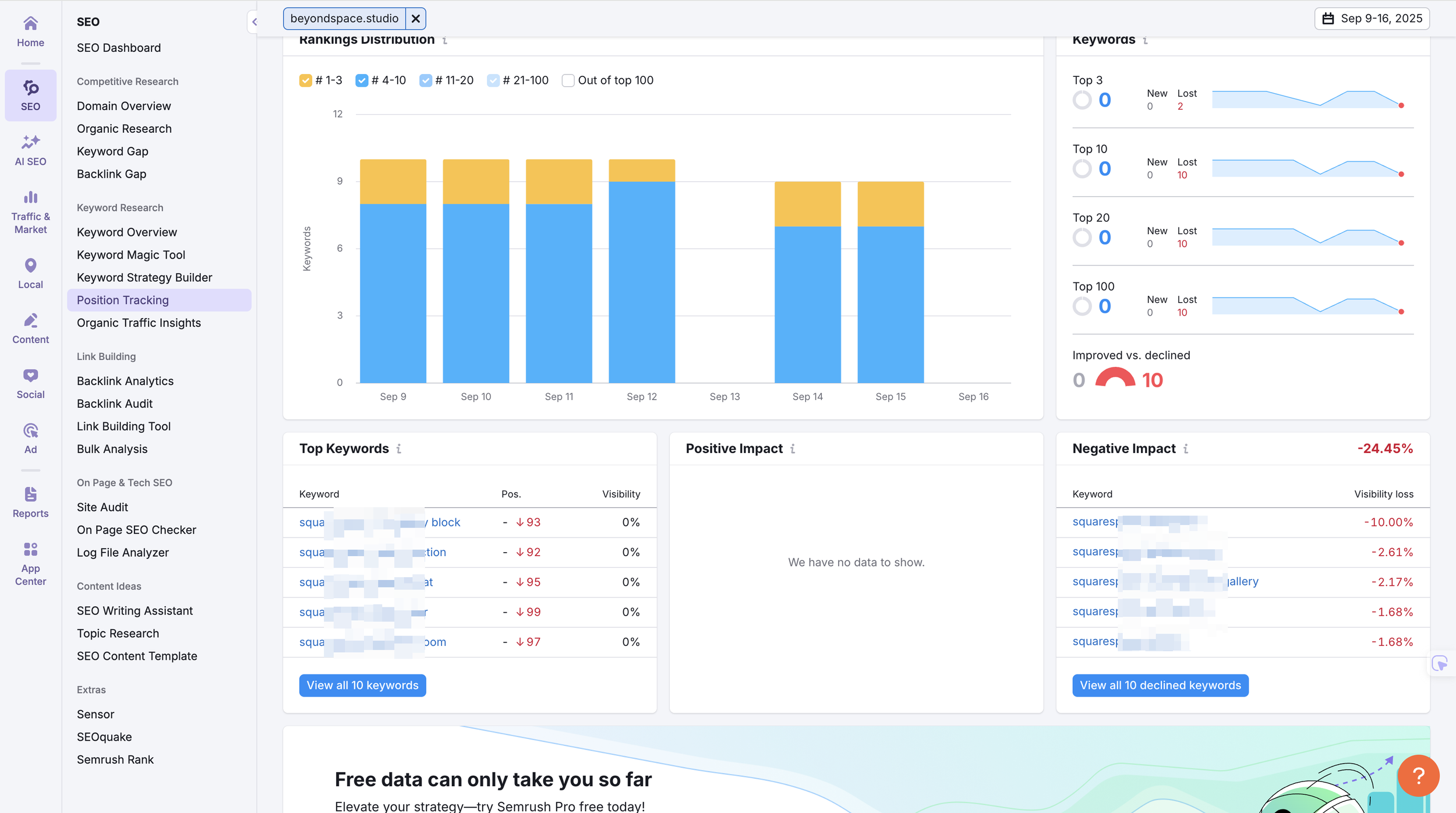Google's Latest Change Disrupts SEO Rank Trackers (September 2025)
If you’ve been noticing unusual drops or missing data in your SEO rank trackers recently, you’re not alone. Across the board, many popular tools like Semrush and others are experiencing significant data disruptions that are affecting keyword rankings and SERP visibility reports.
What’s Happening?
The root cause seems to be Google’s removal of the “&num=100” search parameter. This parameter previously allowed rank trackers to pull 100 search results in one go, making tracking beyond the first page straightforward and efficient. But now, even if you set Google’s search results to show 100 per page, you might only see 40, 60, or sometimes even less. Most of the time, Google’s only giving us 10 results per page now—no matter what we try. With this gone, third-party SEO tools now face major challenges in how they collect and report ranking data, especially beyond page one.
How Does This Affect SEO Rank Trackers?
Many platforms have confirmed this is a real issue and are actively developing fixes. However, in the meantime, you might see reports that seem incomplete, unreliable, or just “off.” This change marks the second major hurdle for SEO tools in 2025, following Google’s January update that enforced JavaScript for search results and caused a large-scale data blackout.
Rank tracking platforms previously leveraged that one-parameter trick to fetch comprehensive keyword ranking data at scale. Now, instead of grabbing 100 results in one quick request, tools must issue 10 separate queries.
This leads to a 10x increase in both time and operational cost for a single keyword, affecting pricing and data freshness across the industry. Most leading rank checkers are now focusing on “Top 20” results reports instead of tracking a full Top 100. If you’re seeing slower updates or gaps in your favorite tools, this is exactly why.
A Glimpse Into The Impact
To give you an idea of what this looks like in practice, here are some examples from my monitoring tools:
Semrush keyword tracker showing a dramatic drop in rankings across the board.
A side-by-side of the SERP checker in Semrush and Mangools showing errors
Why This Matters
At this point, it’s still unclear whether Google’s removal of the “&num=100” parameter was accidental or intentional—possibly aimed at reducing automated scraping. Whatever the reason, this development is a crucial reminder to approach SEO data with caution right now. Your own understanding, combined with insights from Google Search Console, is likely your best source for accurate SEO reporting during this time.
Rank trackers have issued formal statements addressing how they’re handling this change. You can find Semrush’s update, Ahrefs announce and AccuRanker’s details.
For Further Reading
Let’s keep this conversation going and share strategies to navigate this tricky time in SEO data tracking.
Frequently Answered Questions
Question: What exactly did Google change with the &num=100 parameter?
Google disabled the &num=100 parameter that allowed searchers and SEO tools to load 100 results on a single search page. Now, Google only reliably shows 10 results per page, limiting access to deeper results in one go.
Question: How does this affect SEO rank tracking tools?
Rank trackers can no longer request 100 results in one call. They must make 10 separate requests (one for each page of 10 results), which greatly increases the time, cost, and complexity of tracking full top-100 rankings.
Question: Are search results themselves affected, or just the reporting?
The change mainly affects how ranking data is collected and reported. Your actual ranking and visibility haven’t necessarily changed, but the data available to reporters and SEO tools looks different and sometimes incomplete.
Question: Why did Google make this change?
Experts believe Google wants to reduce automated scraping that inflated impression counts and put extra load on their systems. The change also makes performance data more reflective of real human behavior, showing only what typical users see by default.
Question: What impact does this have on Google Search Console metrics?
Many sites see a sharp drop in reported impressions and an increase in average position metrics. This happens because impressions from deep, rarely seen pages are no longer counted, cleaning up inflated data from bot traffic.
Question: Is there a workaround to still get 100 results at once?
Currently, no practical workaround exists. The old “show 100 results” setting and URL tricks no longer work for most users.
Question: How should SEOs adapt their strategies?
Focus on ranking well on page one or two, where results are visible by default. Rely more on Google Search Console for accurate, human-focused performance data. Understand that legacy tracking tools and methods may need an overhaul.


